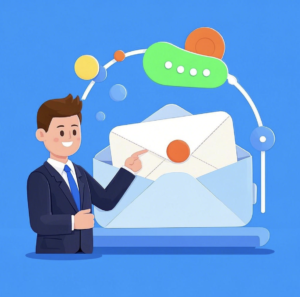The booming e-commerce sector is constantly evolving, and this calls for a major change in how customer support is handled. Traditional customer support, which mainly depends on human agents and has fixed working hours, just can’t meet the growing and diverse needs of online shoppers anymore. In this article, we’ll take a close look at how Artificial Intelligence (AI) can completely transform e-commerce customer support.

I. The Need for AI in E-Commerce Customer Support
1. Challenges with Traditional Methods
- Limited Availability: Traditional customer support with human agents is only available during certain hours. But online shoppers can visit e-commerce sites at any time, day or night. So, when customers have questions outside of those working hours, they might get frustrated waiting for a response.
- High Volume of Inquiries: As more and more people shop online, the number of customer questions and concerns keeps rising. Human agents can get overwhelmed, leading to longer response times and a possible decline in customer satisfaction.
2. AI’s Potential Solution
- Round-the-Clock Support: AI-driven chatbots and virtual assistants can be available 24/7. No matter when a customer has a query, they can get an instant reply, which helps keep customers engaged and happy with the shopping experience.
- Efficient Handling of Inquiries: These AI-powered tools can handle a large number of routine questions simultaneously, freeing up human agents to focus on more complex issues that really need their expertise.
II. Chatbots: From Basic to Advanced
1. Evolution of Chatbots
- Rule-Based Beginnings: In the past, chatbots were simple and worked based on predefined rules. They could only answer very basic questions and had limited understanding of what customers were really asking. For example, if a customer’s question didn’t match exactly with the set rules, the chatbot might not be able to respond properly.
- The Power of NLP: Now, with the use of Natural Language Processing (NLP), chatbots have become much smarter. Advanced NLP techniques like intent recognition help them figure out what the customer actually wants to know. Entity extraction allows them to pick out important details from the customer’s message. This means they can understand the subtleties of human language and give more accurate, contextually appropriate answers.

2. Machine Learning in Chatbot Development
- Supervised Learning: Chatbots are trained using supervised learning on huge sets of customer interaction data. By looking at past conversations, they can learn how to respond better over time. For instance, if a particular type of question was answered in a way that got good feedback from customers, the chatbot will remember and use that response again in similar situations.
- Continuous Improvement: As they keep learning from new interactions, chatbots can refine their responses, making them more effective in providing customer support. They can adapt to new trends in customer questions and the changing language used by shoppers.
III. Virtual Assistants: Enhancing the Customer Experience
1. Personalized Assistance
- Understanding Customer Preferences: Virtual assistants can analyze a customer’s past purchases, browsing history, and other interactions on the e-commerce site. Based on this information, they can offer personalized suggestions and answers. For example, if a customer usually buys sports equipment, the virtual assistant can recommend new products in that category or related accessories.
- Tailoring the Shopping Experience: They can guide customers through the shopping process in a way that suits their individual needs, making it easier and more enjoyable for them to find and buy the products they want.
2. Integration with Other Systems
- Seamless Operations: Virtual assistants can work together with other e-commerce systems like inventory management and order tracking. So, when a customer asks about product availability or the status of an order, the virtual assistant can quickly get the relevant information and share it, providing a smooth and efficient service.

AI-driven chatbots and virtual assistants have huge potential in revolutionizing e-commerce customer support. By evolving from basic to highly sophisticated tools and offering personalized, efficient services, they can greatly enhance the overall customer experience and help e-commerce businesses thrive in a highly competitive market. As technology continues to advance, we can expect even more improvements in how these AI-powered solutions support online shoppers.



